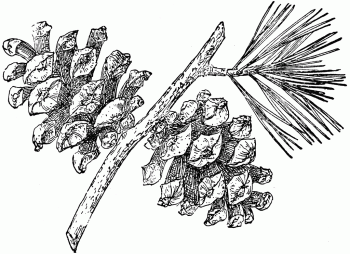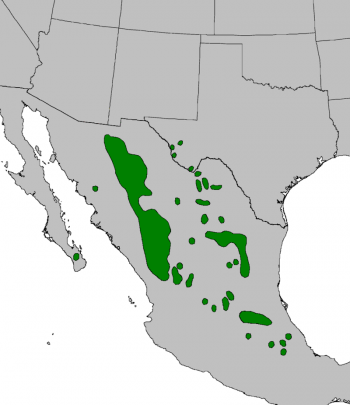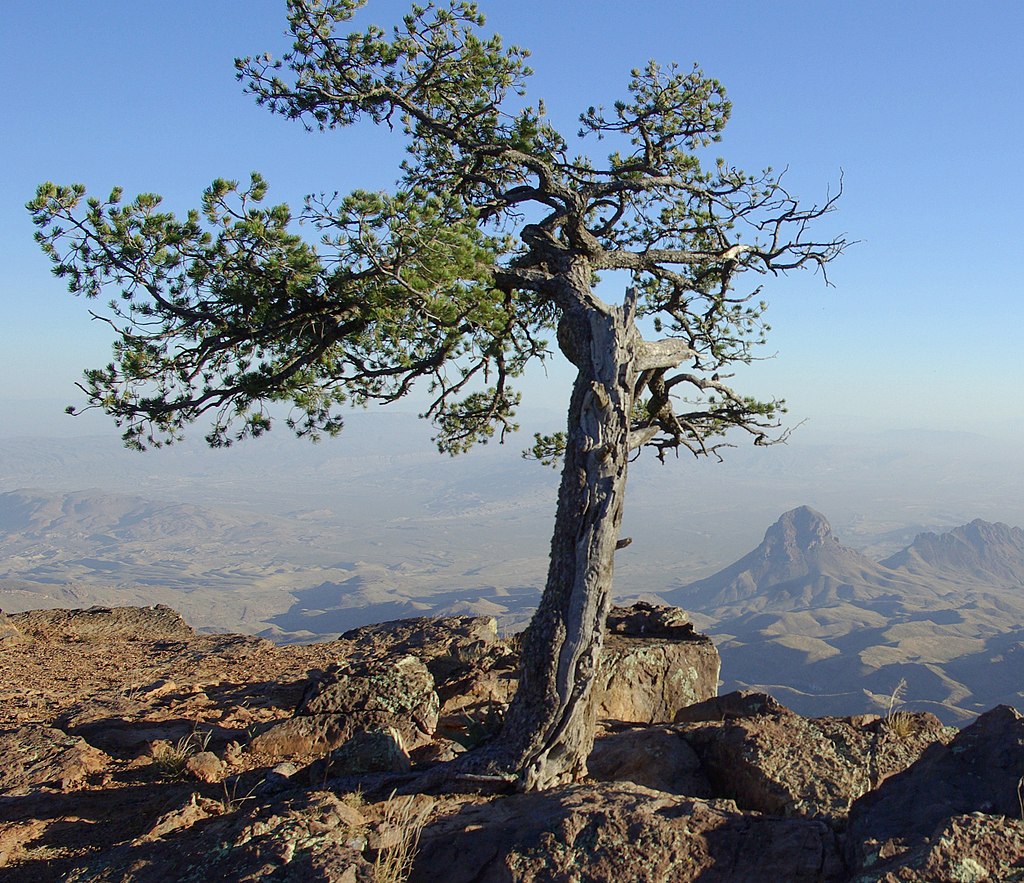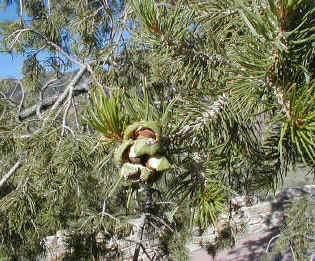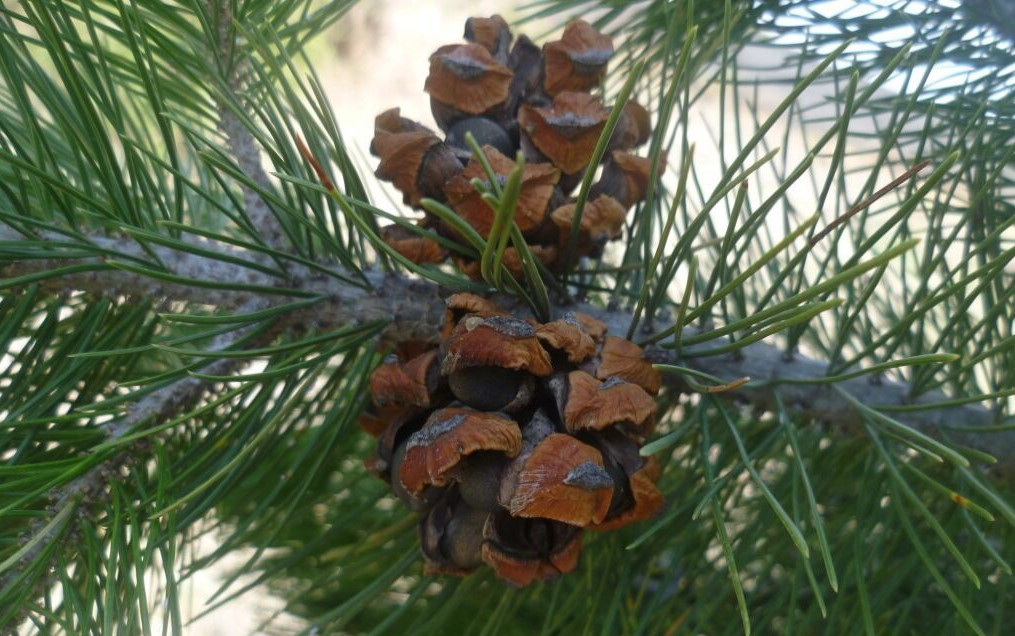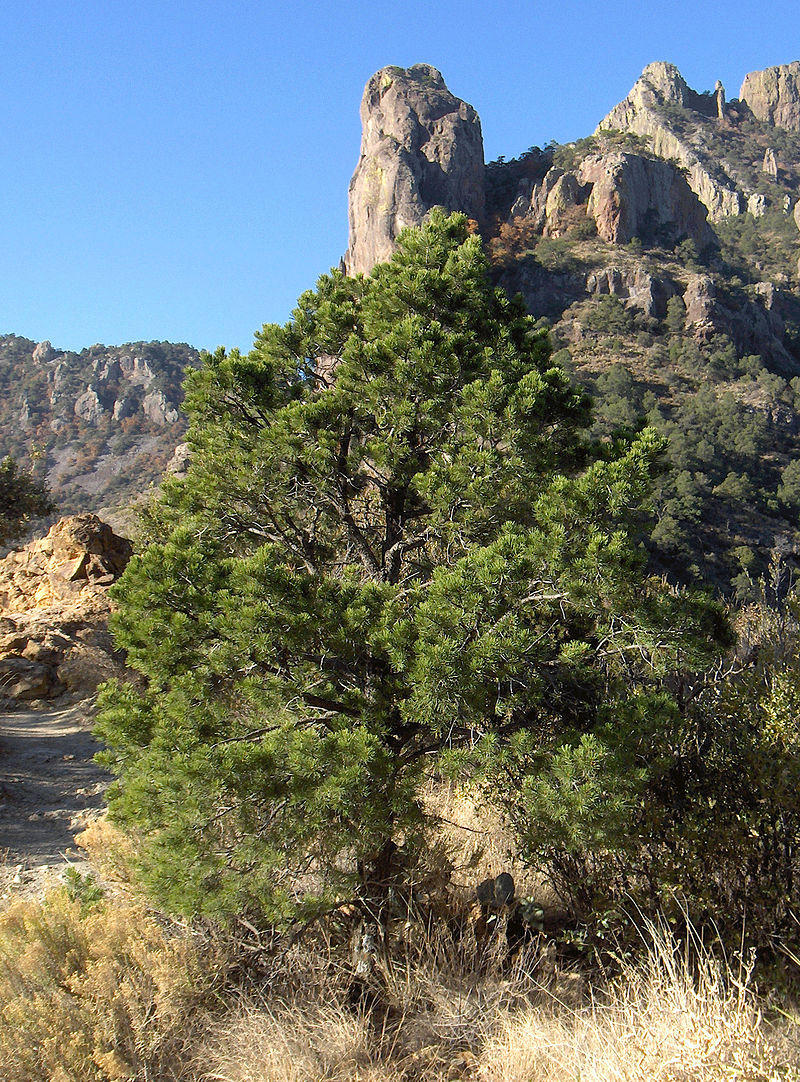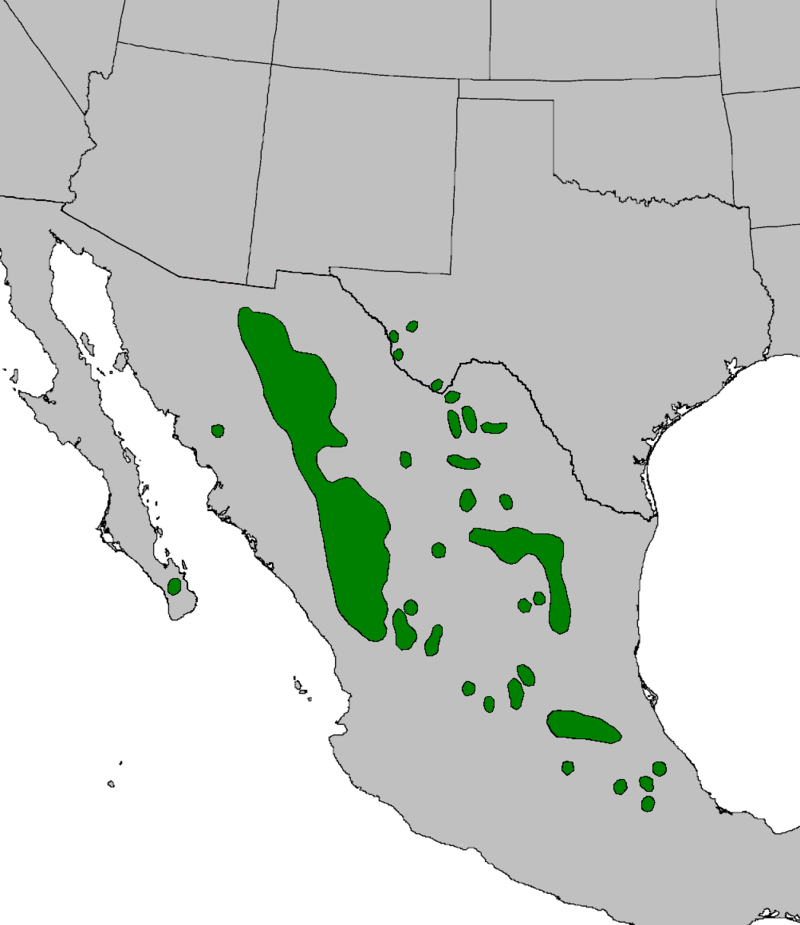subgenus Strobus (Lemmon), section Quinquefoliae (Duhamel), subsection Cembroides (Engelmann).
Pinus cembroides, as described in 1832 by Joseph Gerhard Zuccarini (1790-1848), is commonly known as Mexican piñon, stone seed piñon, three-leaf piñon, or simply pinyon pine; as well as pino piñonero in the Spanish language. The species name means "like cembra," meaning that this species is another good source of edible pine nuts.
Ethnobotany. The seeds are widely collected in Mexico, being the main edible pine nut in the region.
Description. Mexican piñon pine is a shrubby, evergreen, coniferous species of tree that grows to mature heights of 50 feet (15 m) with a strongly tapering trunk up to 12 inches (30 cm) in diameter, measured at breast height. The tree grows with a much-branched rounded crown.
- Bark is red-brown to dark brown colored, scaly, shallowly and irregularly furrowed, with broad ridges.
- Branches grow spreading-ascending. Twigs are colored red-brown, sometimes finely papillate, aging gray to gray-brown.
- Foliar buds are ovoid to short cylindric shaped, colored pale red-brown, measuring 0.2 to 0.48 inch (5 - 12 mm) and slightly resinous.
- Leaves (needles) are borne 3 (sometimes 2 or 4) per fascicle, growing spreading to upcurved, persisting 3 to 4 years on the tree. Needles measure 0.4 to 2.4 inches (2 - 6 cm) long and and 0.024 to 0.036 inch (0.6 - 0.9 mm) wide, and connivent. They are 2 to 3-sided, and Blue- to gray-green in color. Abaxial surface not conspicuously whitened with stomatal bands or if stomatal bands present, these less conspicuous than on adaxial surfaces, often with 2 subepidermal resin bands evident. Adaxial surfaces conspicuously whitened with stomatal lines, margins entire to finely serrulate, with narrowly conic or subulate apices. Needle sheaths measure 0.2 to 0.28 inch (5 - 7 mm) with scales that recurve soon after needle push, forming a rosette; they are then shed soon thereafter.
- Pollen cones are ellipsoid shaped, measuring up to 0.4 inch (10 mm) long and yellow colored.
- Seed cones mature 2 years after pollination, shedding seeds and falling soon thereafter. Cones are spreading, symmetrically ovoid before opening and broadly depressed-ovoid to nearly globose when open. They measure 0.4 to 1.4 inches (1 - 3.5 cm) long, colored pale yellow- to pale red-brown, resinous, and nearly sessile or short-stalked. Apophyses are thickened, slightly domed, angulate, and transversely keeled. Umbos are subcentral, slightly raised to depressed, truncate or umbilicate shaped.
- Seeds are ovoid to obovoid shaped with a brown, wingless, 0.48 to 0.6 inch (12 - 15 mm) body.
Distribution. This species is native to piñon-juniper woodland at elevations of 2,300 to 8,000 feet (700 - 2400 m). In the USA, it is found in southeastern Arizona, southwestern New Mexico, and west Texas. In Mexico, it occurs in mountainous parts of most states north of latitude 20°N.
Hardy to UDSA Zone 8 - cold hardiness limit between 10° and 20°F (-12.1° and -6.7°C).
